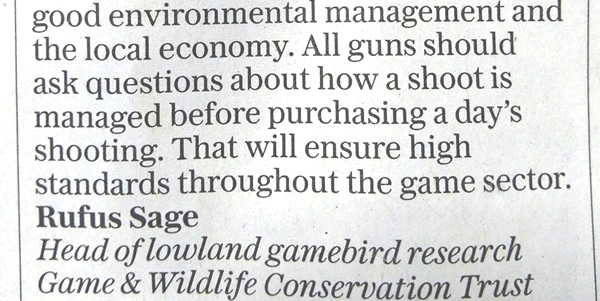
Sir - at the Game & Wildlife Conservation Trust (GWCT) research department, we have been measuring the impact of releasing pheasants and shooting on the environment for decades, and observing along the way some of the other practices referred to by Richard Mockett (Pheasant shooters need to hold their fire, February 13th) in his measured letter.
What we find or see is like everything else in life, things can be done well or badly. In the case of pheasant releasing and shooting, it is a bit of a myth that it is all size related. Big and small shoots often improve their woodlands and plant bird friendly game crops but sometimes they don’t. It is fair to say the bigger shoots have the potential to be more damaging, but also have more money to plough into good environmental management and the local economy.
There are Codes of Good Practice around all of this. The GWCT and other interested organisations have taken on the task of seeing that everyone implements them. All guns should ask questions about how a shoot is managed before purchasing a day’s shooting. That will ensure high standards throughout the game sector.
Rufus Sage
Head of lowland gamebird research
Game & Wildlife Conservation Trust
Help drive up the conservation benefits of pheasant releasing
When it is done to the highest standards, the conservation benefits of pheasant releasing are there for all to see - more farmland birds, well-maintained woodland and food-rich cover crops. Our research showing the good that game management can do in the wider countryside, when practiced well, was even acknowledged by the RSPB in a recent Guardian article:

But we cannot be complacent. we believe that pheasant shoots can and need to achieve even more.
Please help us make this possible. By limiting early mortality, we can reduce the need to release more birds – driving up the conservation benefits of shooting and driving down the criticism released pheasants might attract.
Donate here >